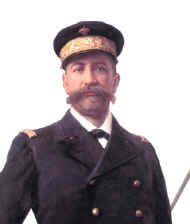About the IHO
International Hydrographic Organization
The International Hydrographic Organization is an intergovernmental consultative and technical organization that was established in 1921 to support safety of navigation and the protection of the marine environment.
The object of the Organization is to bring about:
- The coordination of the activities of national hydrographic offices
- The greatest possible uniformity in nautical charts and documents
- The adoption of reliable and efficient methods of carrying out and exploiting hydrographic surveys
- The development of the sciences in the field of hydrography and the techniques employed in descriptive oceanography
The official representative of each Member Government within the IHO is normally the national Hydrographer, or Director of Hydrography, who, together with their technical staff, meet at 3-yearly intervals in Monaco for an IHO Assembly. The Assembly reviews the progress achieved by the Organization through its committees, sub committees and working groups, and adopts the programmes to be pursued during the ensuing 3-year period. A Secretary General and two Directors are elected to administer the work of the Organization during that time.
The Secretary General and Directors, together with a small international staff of technical experts in hydrography and nautical cartography and locally recruited administrative support staff make up the IHO Secretariat in Monaco. The Secretariat of the IHO, coordinates and promotes the IHO's programmes and provides advice and assistance to Member States and others.
Why coastal States should be members of the IHO
A paper on why coastal States should be members of the IHO is available here in English, French and Spanish, together with a briefing paper on the benefits of being an IHO Member State.
|
 |
History
Formation of the International Hydrographic Bureau. International cooperation in the field of hydrography began with the first International Maritime Conference held in Washington in 1889, followed by two others in Saint Petersburg, in 1908 and 1912. In 1919, twenty-four nations met in London for a Hydrographic Conference, during which it was decided that a permanent body should be created. The resulting International Hydrographic Bureau began its activity in 1921 with eighteen Member States (including the British Empire then composed of the United Kingdom and Australia). At the invitation of H.S.H. Prince Albert I of Monaco, a noted marine scientist, the Bureau was provided with headquarters in the Principality of Monaco. The Organization has remained in Monaco ever since, thanks to the continuing and very generous support of the Prince's successors.
The IHB changes its status to an international organization. In 1970, an intergovernmental Convention entered into force which changed the Organization's name and legal status, creating the International Hydrographic Organization (IHO), with its headquarters (the IHB) permanently established in Monaco. The Organization currently has a membership of ninety maritime States, with several others in the process of becoming Members.
In 2016, several amendments to the Convention entered into force. The principal changes to the administrative arrangements of the IHO were :
- The term International Hydrographic Bureau (IHB) used to describe the headquarters and the secretariat of the IHO ceased to be used and was replaced by the term IHO Secretariat;
- The Directing Committee, comprising a President and two Directors ceased to lead the IHB (Secretariat of the IHO). Instead, the Secretariat of the IHO is now led by a Secretary-General assisted by two subordinate Directors;
- The term International Hydrographic Conference used to designate the principal organ of the Organization, composed of all Member States, was replaced by the term Assembly. The ordinary sessions of the Assembly are held every three years instead of every five years for the Conference.
- The subsidiary organs will report to the Council that will then refer their proposals to the Assembly or to the Member States, for adoption, through correspondence;
- The planning cycle for the IHO work programme and budget will change from a five-year to a three-year cycle.
- For States wishing to join the IHO that are already Member States of the United Nations there is no longer a requirement to seek the approval of existing Member States of the IHO;
- The strict eligibility requirements for candidates seeking election as the Secretary-General or a Director have been relaxed; and
- Where voting by correspondence is required, through the Council, decisions will be taken based on a majority of the Member States that cast a vote, rather than the previous arrangements where a majority of all the Member States entitled to vote was required. However a minimum number of at least one-third of all Member States eligible to vote must vote positively for the vote to stand.
|
